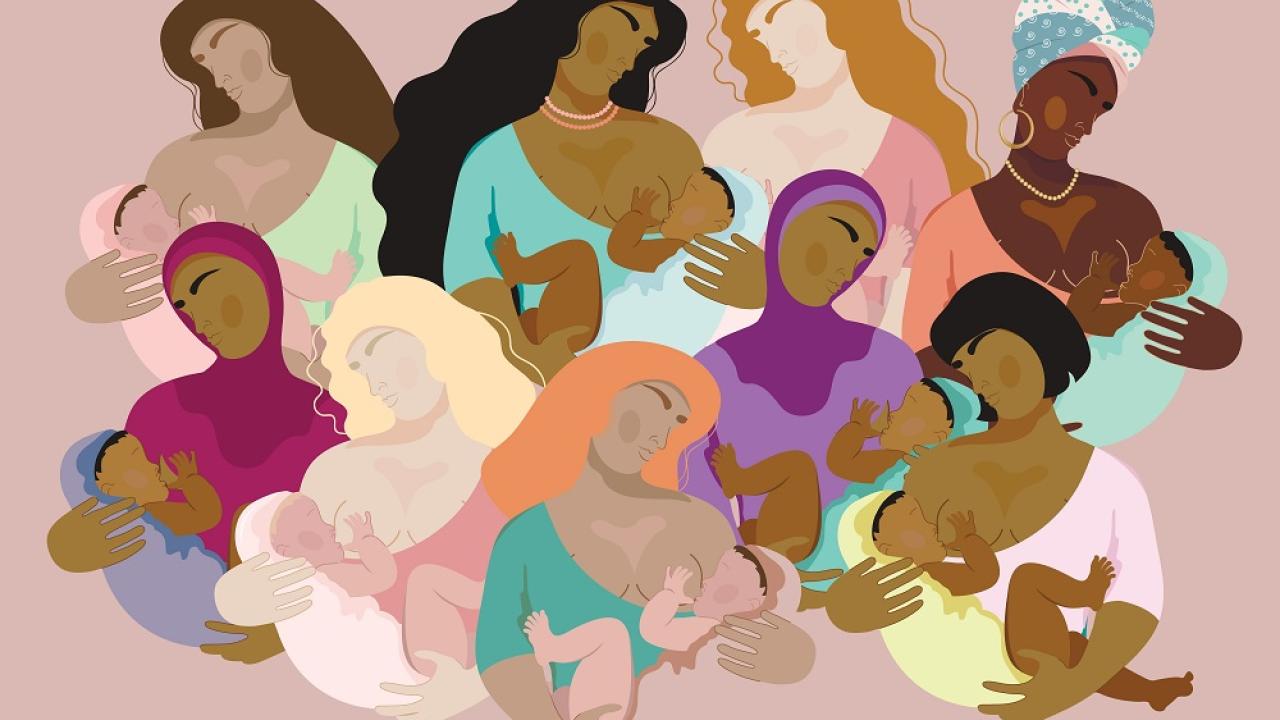
The Terroir of Breast Milk
They say there’s a first time for everything. The recent Savor lecture “Our First Superfood and the Infant Microbiome” was the first time I watched a game show focusing solely on breast milk, the original “superfood.” I’m sure it was the first time for many others in the Zoom audience too!
At this lecture, speakers Bruce German and Katie Hinde figuratively went head-to-head (while socially distanced outside at the UC Davis library), responding to questions about breast milk posed by moderator Jennifer Smilowitz.
As a master’s student studying viticulture and enology, I was surprised to hear the word “terroir” used to describe breast milk during the game show. This is a term I often use when mentioning how a wine reflects the place it was made (think: soil, climate), but I had never heard it used to discuss breast milk—I was intrigued.
When Hinde explained this fun fact, the concept of “terroir of breast milk” made perfect sense. When a baby is breastfed, they experience the cuisine of their culture through the flavors and aromas found in their mother’s milk. Each milk is unique to the mother’s individual diet and reflects the foods of the mother’s environment and culture. For example, Dr. Julie Mennella in Philadelphia, along with colleagues, has studied how breast milk changes in texture, flavor, and aroma according to meals and seasons and what foods the mother consumes. This dynamicity provides the baby with variety, and even the variety differs from baby to baby. Babies may seemingly consume only one food (breast milk) when they are breastfed for the first portion of their life, but they are simultaneously consuming a plethora of flavors and foods and learning so much in the process!
Breast feeding’s sense of terroir teaches babies about foods long before they can even eat solid foods. They begin to develop their own sense of taste and familiarity, whether for garlic or spice or sweetness, which influences their preferences when they eventually begin eating solid foods.
Hinde went on to share that formula, on the other hand, is more homogenous and lacks the same sense of terroir that a mother’s breast milk provides. Interestingly, formulas have been shown to mute a baby’s sensitivity to sugar, so babies will usually require much more sugar to taste sweetness when eventually introduced to solid foods. No matter what the baby consumes, however, they will be influenced by their food options and will develop preferences and tastes accordingly.
As someone whose palate is an integral part of their work and studies in wine, I appreciated learning how palates evolve--it occurs much earlier than I realized! I also have my own mother to thank for my palate’s unique development, which was influenced by her culture and cuisine. It also gives new meaning to the phrase “you are what you eat”!
This idea of breast milk’s terroir was just one of the many fascinating topics discussed at the Savor lecture series event. Attendees had the opportunity to learn about the powerful role of breast milk in an infant’s growth and development, that microbial hero Bifidobacterium infantis resides in breast milk and protects babies from pathogens, how COVID-19 immunity is being passed down to babies through mothers’ breast milk, and so much more. I wholeheartedly recommend watching the recording and, if you’re feeling up to the challenge, playing along with the game show!

Kendal Koorenny is a current master’s student in the viticulture and enology program at UC Davis. She adores food, wine, and science and writing about it all! When she is not in class or working, you can find Kendal reading a book, crafting a new cocktail recipe, or spending time with her kitten.
